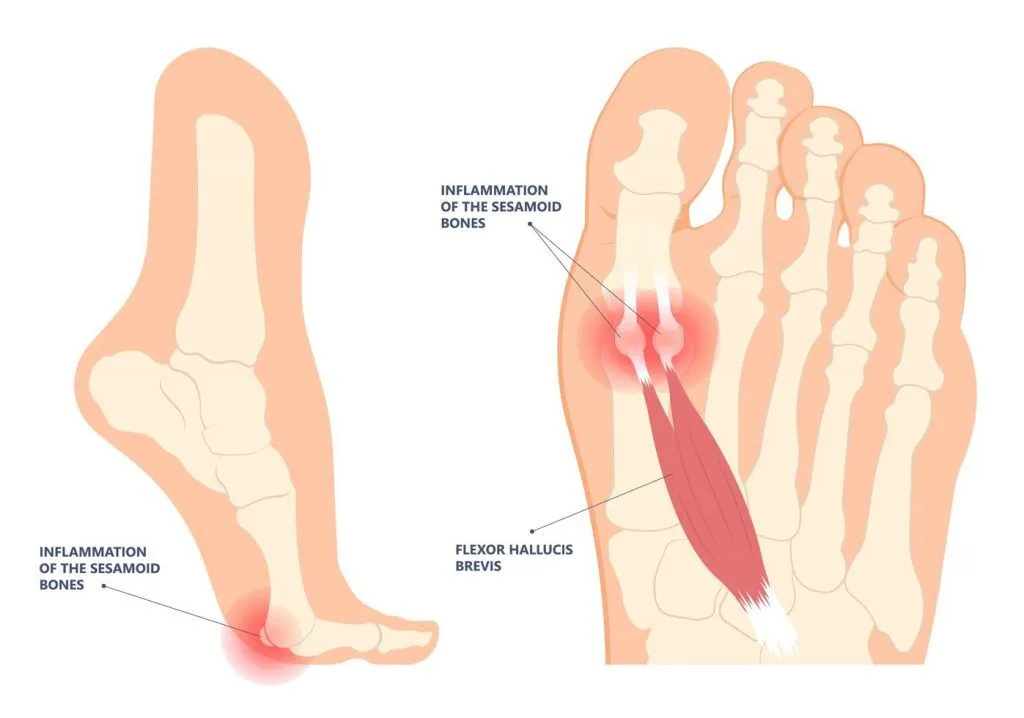What is Sesamoiditis?
Sesamoiditis is a condition that causes metatarsalgia or foot pain under the ball of the big toe joint. It is a result of inflammation when the sesamoid bones are injured. Sesamoids are a pair of oval-shaped bones that sits under the first metatarsal bone, and it plays a vital part in acting as a fulcrum to allow the tendon (flexor hallucis longus) to pull and flex our big toe effectively and efficiently.

Causes of Sesamoiditis
Need Help? See Our Podiatrist Today
Risk Factors of Sesamoiditis
Risk factors of sesamoiditis include:
- High-impact sports, especially jumping sports
- Forefoot runners
- Barefoot training
- Dancers (e.g Ballet dancers)
- Sudden increase in activity
- Flat feet or high arch feet (pes cavus)
- Calluses under big toe joint
- Prominent bones at the ball of the foot
- High heels

Signs and Symptoms of Sesamoiditis
Signs and symptoms of Sesamoiditis include:
- Pain at the ball of the big toe joint
- Dull aching pain or throbbing pain
- Pain worsens with activity or barefoot
- Swelling or prominent soft bump present
- Stiffness
- Difficulty flexing or extending the big toe
Sesamoiditis Management in Singapore
The management for sesamoiditis typically involves taking pressure away from the sesamoid and allowing recovery. Sesamoiditis must be managed early to prevent fracture or avascular necrosis from occurring.
Management options for sesamoiditis in Singapore include:
- Rest
- Pain medications – you should seek a medical professional before taking)
- Avoid barefoot
- Changing to appropriate footwear
- Immobilisation with a walking boot
- Customised foot orthoses to reduce pressure
- Extracorporeal shockwave therapy to stimulate blood flow and growth factors to the area
- Magnetotranduction therapy to reduce inflammation



